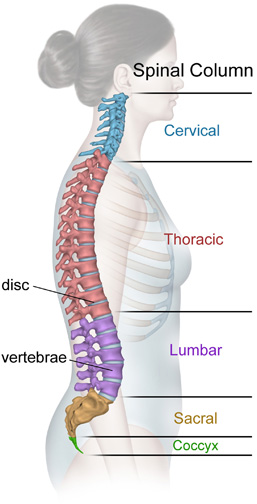
The goal of spinal fusion surgery is to stabilize your spine, reduce back pain and lessen leg pain. Minimally invasive techniques offer exciting new options for patients. The decision to have surgery requires careful thought. Your surgeon can advise you and answer your concerns. Read this brochure to answer your basic questions. Write down any questions you may have and decide with your surgeon if minimally invasive lateral spinal fusion is right for you.
Why is a spinal fusion performed?
Your spine is subject to constant wear and tear. Soft rubber-like discs between the bones in your spine cushion and protect your spine as you perform daily activities. Back pain can occur when one or more of these discs wear out or become damaged by injury or disease, such as degenerative disc disease or DDD. Spinal fusion is performed to stabilize the spine and reduce or remove the pain by removing the disc and joining two or more vertebral bones together.
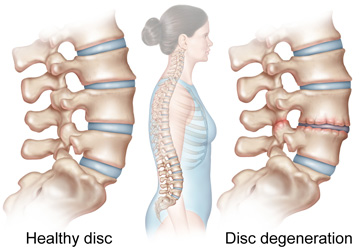
What makes a minimally invasive lateral fusion different?
The minimally invasive lateral procedure for spinal fusion is performed through a small incision in your side rather than your back. This protects the muscles in the back from being cut during the surgery. Minimally invasive surgery may have many potential advantages when compared to traditional open spine surgery:
- Smaller incisions and smaller scars
- Less surgical blood loss
- Shorter hospital stay
- Less pain and pain medicine during recovery
What happens during surgery?
You will be placed on the operating table on your side and you will be taped to the table so that your body doesn't move during the surgery.
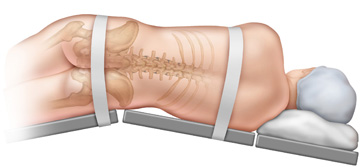
Your surgeon will place a special instrument called a retractor into the incision in your side and surgically tunnel down to your spine.
With other special instruments your surgeon will remove the disc that is causing your pain. In place of the disc, your surgeon will insert an implant holding bone graft. After the fusion procedure, your surgeon may also place other devices such as small screws and rods through small incisions in your back. The implants will help stabilize the spine while the bones are fusing together and your body heals.
What happens after surgery?
Your pain will be treated by medication and you will likely remain in the hospital for 1-3 days. During your recovery you will see your surgeon for follow-up appointments and start a physical therapy program. Talk to your surgeon about when you can start to resume daily activities and return to work. Upon healing, you will have one small scar on your side and small scars on your back from your incisions.
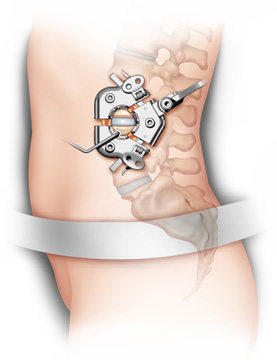
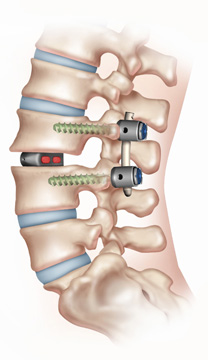
What are the benefits and risks?
Each patient is unique so no two will respond to surgery in the same way. Potential benefits include a decrease or elimination of your pain and a return to your normal activities. As with any major surgery there is a risk of complications such as continued pain, infection, nerve damage, or the need for surgery in the future. Talk to your surgeon to make sure you understand the benefits and risks of any surgical procedure.
